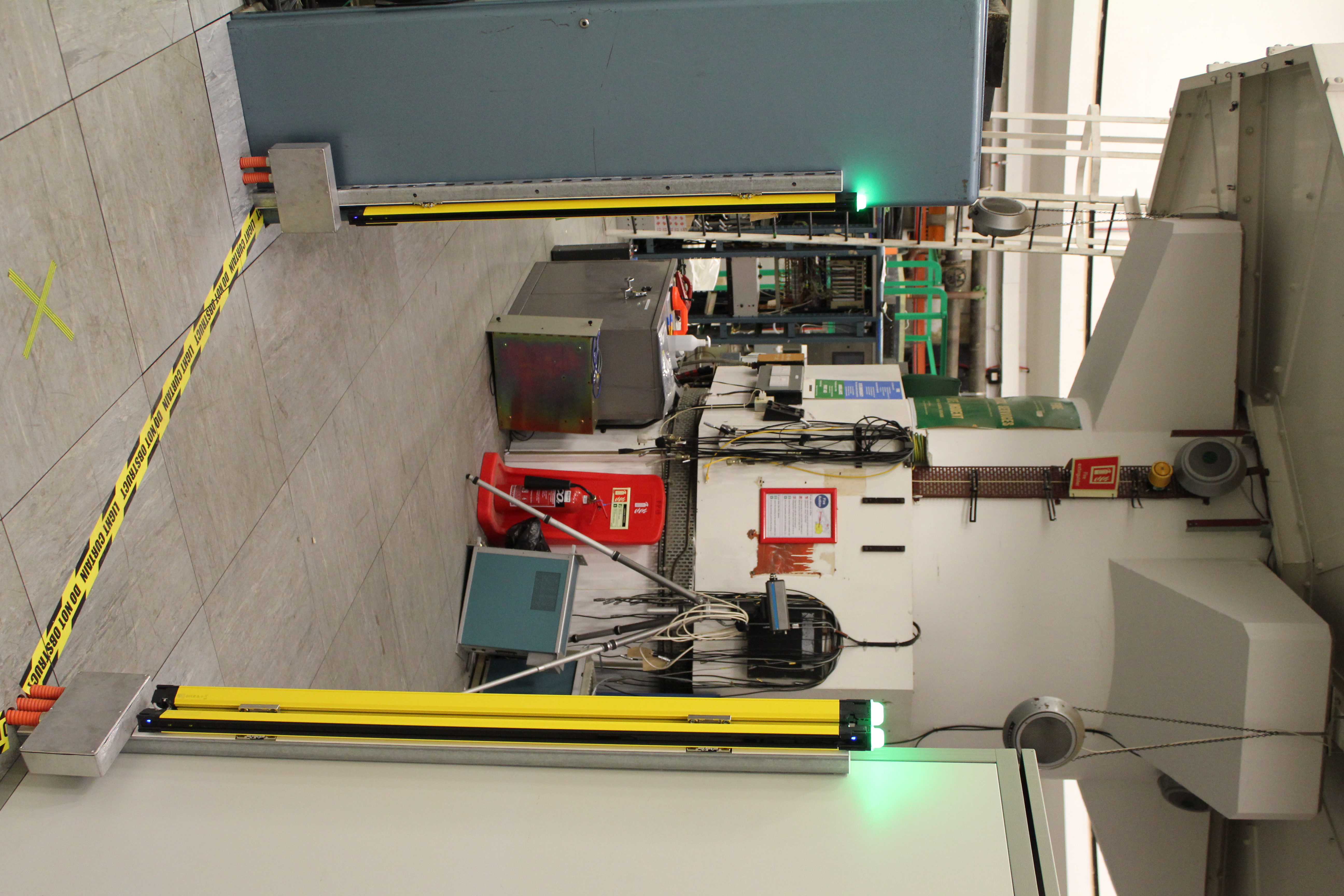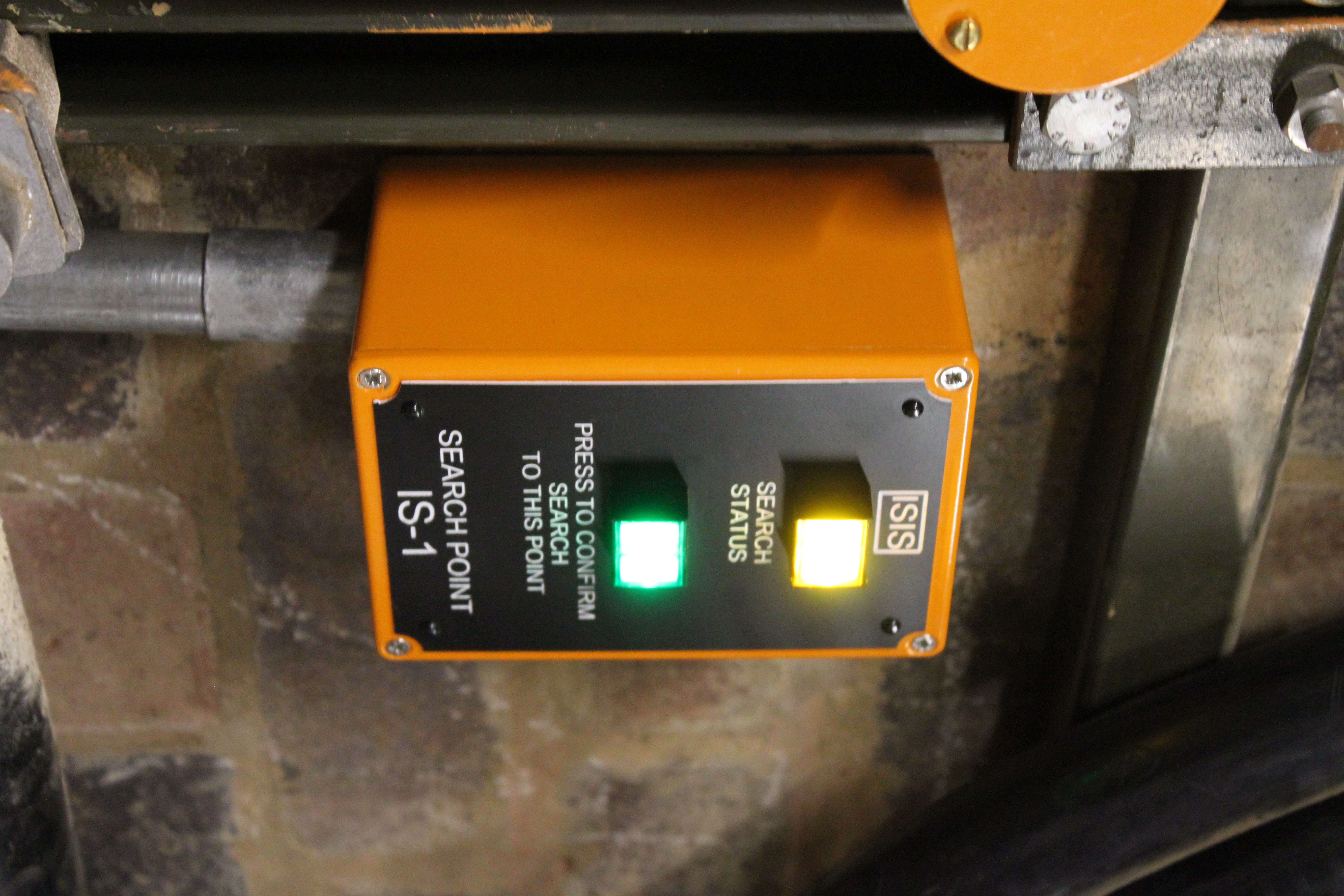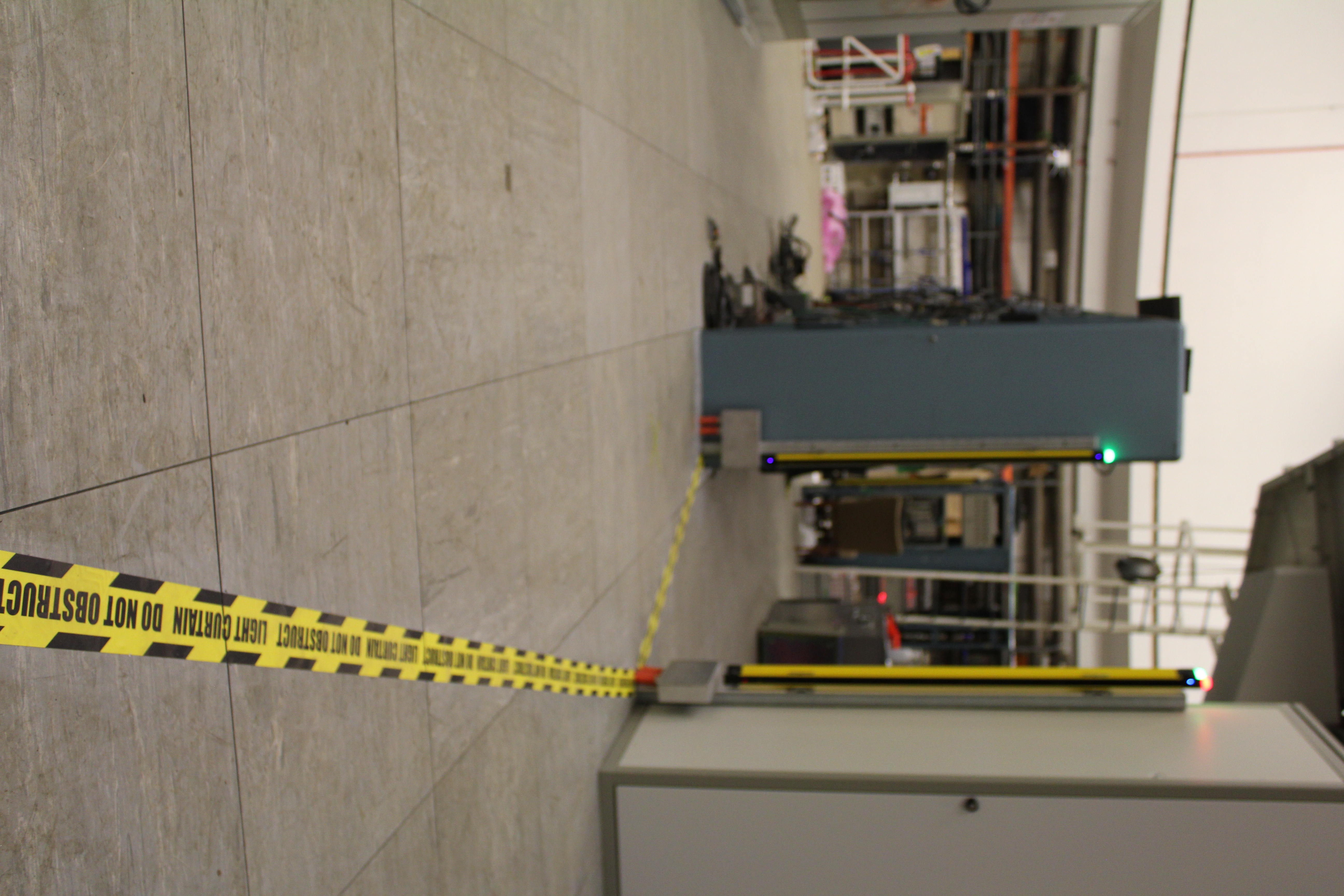Before the ISIS accelerator is switched on for an operational cycle, the ISIS Duty Officer is responsible for ensuring there is no one inside any of the areas that will present significant hazard or receive high radiation doses, including the Inner Synchrotron. This circular room contains a large number of electronics racks and ancillary equipment. The Synchrotron has multiple access points, including 8 stairways down into the catacombs, making it a very complicated place to search.
The previous search process required four competent personnel to follow a precise route through the area, visiting defined search points in the process. The need for four staff members trained in the process to be in the area was a challenge, especially since the crews working in the ISIS Main Control Room (MCR) have started working in teams of three, rather than four. To ensure the MCR was still manned, non-crew staff members were regularly contacted to assist with the search procedure before the beam could be established.
To solve this issue, Mark Arnold and Elliot Taylor from the RF Group interlock section, and Darren Smith from the MCR crew, designed and developed a new interlocks system that uses 14 'light curtains' and more search points to enable the area to be searched with just two staff members.
The light curtains consist of a multiple beam of emitting LEDs and corresponding receiving sensors, these are triggered if something passes through them and breaks the light beam. They have been installed across the tops of all the catacomb entrances and at other points in the Inner Synchrotron. If any of the light curtains are triggered out of the set sequence during a search, the search is cancelled and must be started again.
"We had considered improving the physical gates and adding interlock switches, but the light curtains are used widely in industrial settings, and we were able to adopt them for our use here," explained Mark.


Light curtains in the inner synchrotron: between computing racks and at one of the catacomb entrances.
The search begins in the catacombs below the accelerator. The 27 search points must be visited in turn, with the crew pressing a button confirming they have checked that area is empty. The search pattern requires the crew to pass through some curtains; these curtains are deactivated when the search point before them is visited, and reactivated once the next search point has been reached, allowing the searching crew members only to pass through.
 Image left; a search point, with the button that needs to be pressed to confirm that area is empty.
Image left; a search point, with the button that needs to be pressed to confirm that area is empty.
The use of light curtains means that they can be sure that, once an area has been searched, no one will be able to enter it without triggering a light curtain and cancelling the search. This means that a staff member no longer has to be present in that area, freeing them up to move on to the next section, and reducing the staff needed to complete the full search.
“This new system is not only safer, but is actually quicker than the previous method," explained Elliot. “Before, the route was very complicated and we often relied on a laminated crib sheet to remind us which area to check next. This new route is now much more logical."
The project began over 18 months ago, with new electronics racks developed and assembled in the R12 labs, before being installed during the COVID lockdown. However, it has been during the current ISIS long shutdown that the majority of the installation work has been completed. As well as moving the old search points to new locations, the addition of new ones, installing the light curtains and connecting it all together; a process that used almost 2km of cables and required the jointing of approximately 150 multicore cables.


Darren, Mark and Elliot next to the new electronics rack that controls the light curtains.
After installation, the team have been testing the system to make sure it will be ready to use when the beam is re-established in the New Year. Darren adds; “we have added signage to the floor and tops of the catacomb ladder access points so that people are aware of where the light curtains are – even someone leaving a toolbox in the wrong place will trigger the system." Indicator Lamps have also been added to the ends of the curtains to inform the crew of their status.
They are already looking at expanding the system to cover other areas of ISIS, such as the outer synchrotron hall; as Darren explains; “We started with the hardest area, and so it would definitely be possible to extend the system elsewhere if required."
 Signage to show where the light curtain operates
Signage to show where the light curtain operates
